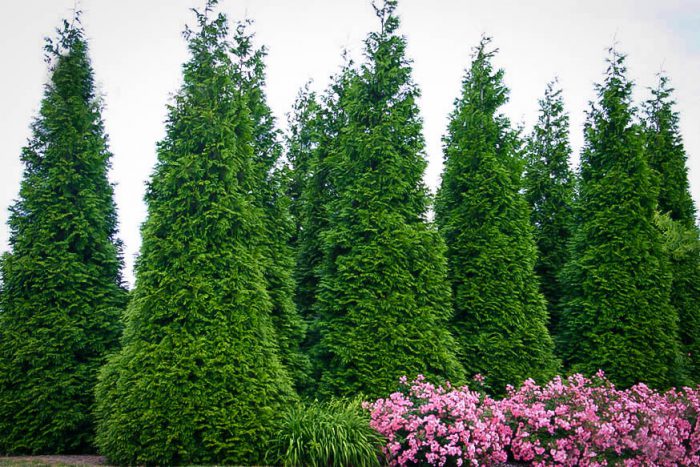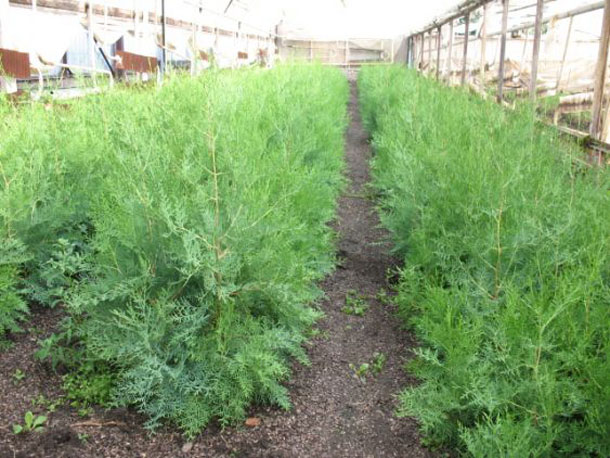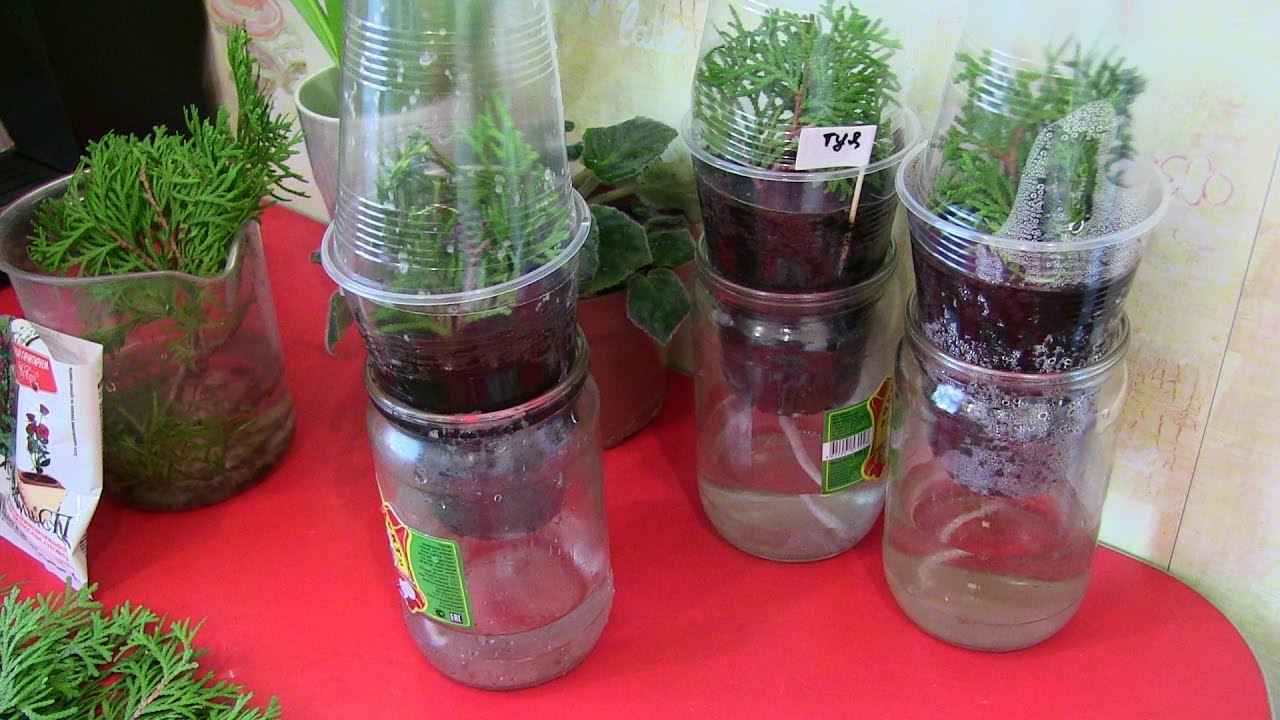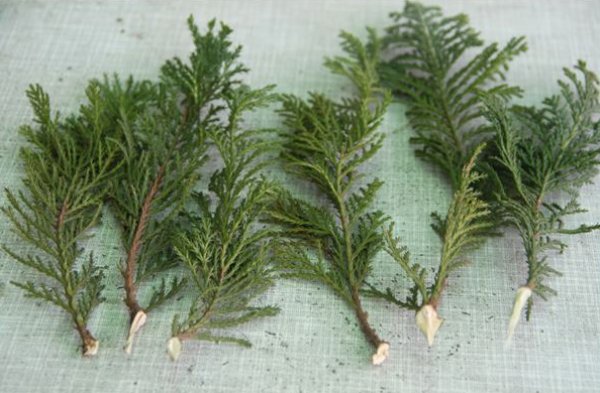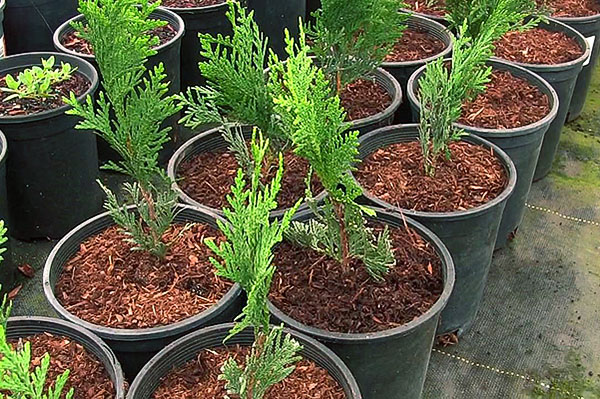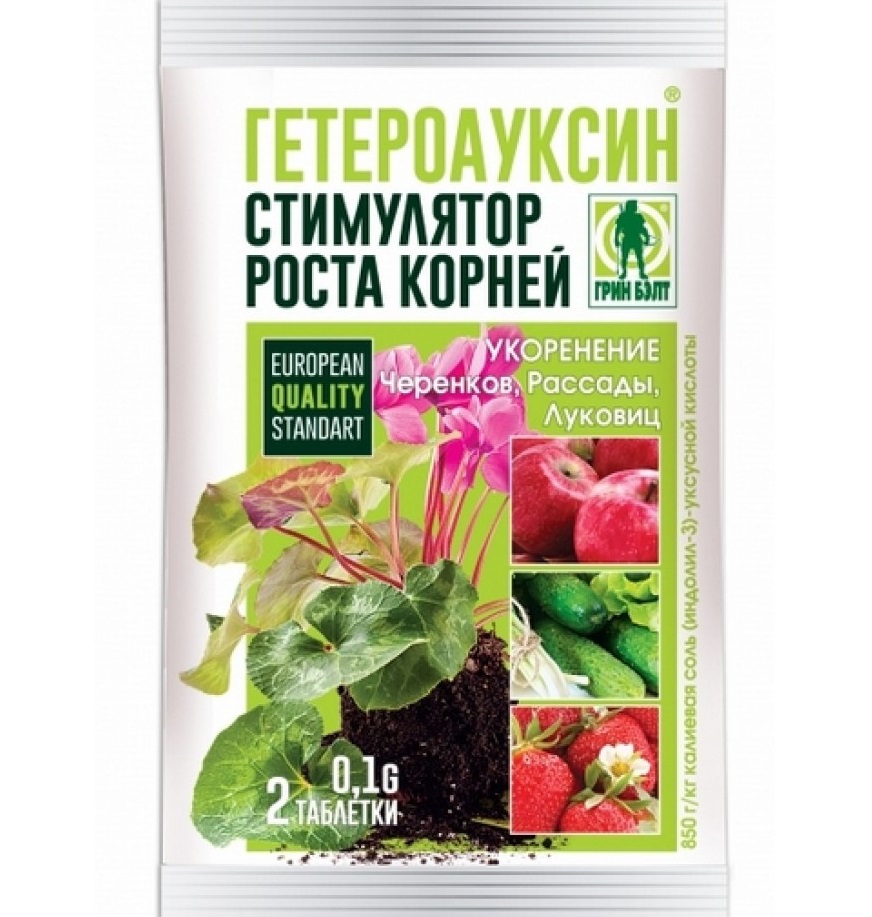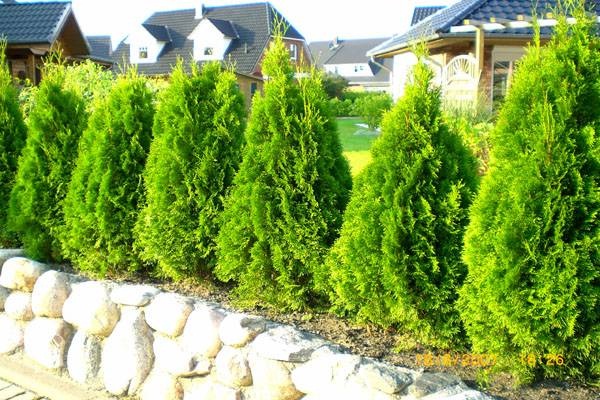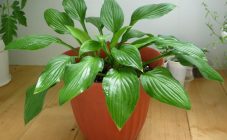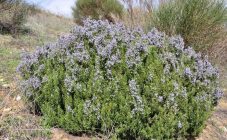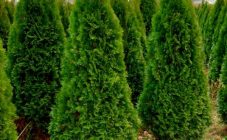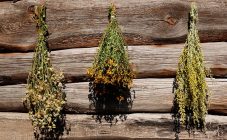Content:
Thuja refers to ornamental plants, with which they decorate entire alleys or create hedges. Therefore, landscape design requires as many trees as possible. In this case, a method such as cutting thuja is useful.
Briefly about
The plant is a relative of conifers of the Juniper family. This genus unites 6 species and is divided into 120 varieties. The tree has a pleasant aroma and can live for about 150 years, but there are specimens that live longer.
Thuja belongs to evergreen trees. The diameter of the shrub reaches 6 m.At home, it does not exceed 11 m, and in the wild, these trees can reach 70 m.
The tree is not demanding to care for and withstands frost well.
Distinguish between thuja conical and spherical shapes. The most popular among the cone-shaped specimens are Smaragd and Brabant, and among the globular ones are Danica and Woodward.
Selection of planting material
To start breeding thuja, you do not need to spend a lot of effort, but still adhere to the basic rules and follow a certain sequence of actions when cutting this tree is simply necessary. And, of course, you need to start with the selection of planting material, which plays a special role in her breeding.
The main criteria for the selection of thuja cuttings include the following:
- The planting material must be healthy and strong.
- It is better not to use too young and old shoots.
- Pay attention to the cuttings that grow in the middle of the tree. Such branches are not yet mature enough, but not completely woody either.
- The stalk that will be used for reproduction should reach 50 cm, and a little tree bark should be left at its end. This part is usually called the "heel".
- To get a heel, a branch is either abruptly cut off, or cut in a special way using a knife.
Thuja propagation by cuttings in water
Although it is quite simple to propagate thuja, it is still sometimes impossible to achieve a positive result using the usual planting of the cuttings in the ground. How to graft thuja in this situation? You need to use the method of cuttings in water.
This method requires compliance with the following rules:
- It is not worth putting several branches in one container, since there will be much less nutrients per shoot and the development process will not be so successful.
- The amount of water in the can, of course, will decrease, but you should not completely pour out the stagnant water. You just need to add a new portion. Otherwise, the inner drink of the roots will be disrupted, and the growth process will slow down significantly.
- Only the heel is placed in the water. Leaves should not touch the water.
Planting in the soil can be started in 1.5-3 weeks. It all depends on how quickly the process develops.
What time of year is it better to start grafting
Thuja propagates by cuttings in autumn (in October). In the spring, sap flow begins and young shoots grow. Given this, rooting of thuja cuttings is also much faster. However, it is during this period that you need to be more careful. The process of active growth requires a lot of moisture, so if you skip at least one watering, the cutting will dry up and disappear.
Rooting thuja cuttings
Another important stage is rooting. But how to root a thuja stalk at home, you should figure it out in more detail.
Rooting can be done in 2 ways - in a substrate and in a diaper.
For the first option to be successful, you should adhere to the following rules:
- Growing thuja from cuttings at home begins with the correct selection of capacity for the plant. It should have many holes to provide good aeration for the roots.
- Expanded clay or gravel can be used as drainage.
- You should also prepare a special soil. For this they take peat, leafy soil and sand. The resulting mixture is poured with a dark solution of potassium permanganate.
- Before planting, the roots are dipped for 12 hours in water, after adding a growth stimulator, for example, root, to the container. This will contribute to the rapid development of the root system.
- The twigs are planted in the soil to a depth of about 1.5 cm.
- Sprinkle the substrate with river sand on top.
As for rooting in a diaper, cuttings that were harvested in the fall are suitable for this method. Before planting, the shoot is also placed in water with the addition of a growth stimulator for about 12 hours.After that, the rooting process is started, following the step-by-step instructions:
- Spread a disposable diaper with the absorbent side up and place the sphagnum on it.
- Soak the moss in warm boiled water.
- Put the cuttings at a certain distance and bend the diaper so that the branches do not touch each other. It should contain only the heel.
- Put the diaper with petioles in a plastic bag and hang it near the window.
Ways to stimulate rooting
For successful rooting of cuttings, special tools should be used. The most effective and popular among gardeners are:
- root;
- heteroauxin;
- radiopharm.
Kornevin contains calcium, manganese, phosphorus and molybdenum, which contribute to good growth. One of its main advantages is full compatibility with various drugs, which is used for fertilizers and fight against diseases. Kornevin is very easy to use. It can be applied dry or diluted with water. The dosage for preparing the solution is simple: how many grams of the product are taken, the same amount of water will be needed.
Another great drug is heteroauxin. If it is planned to grow small thuja, about half a meter, then it will be enough to use a 0.002% solution at the rate of 5 liters per plant. For taller trees use 0.004% product per 10 liters. If the cuttings are problematic, then during the season they can be watered with heteroauxin about 10 times.
And finally, Radipharm, which contains many useful minerals, amino acids, vitamins and polysaccharides. For 10 liters of water, you need to use 25 ml of the drug. For watering one thuja, 0.5 liters of solution is enough.
Rules for planting cuttings in the ground
Thuja can be planted with cuttings both in autumn and spring. However, there is a risk that plants planted in the fall may not have time to mature before winter begins.
It would be most reasonable to plant the cuttings first in a greenhouse or under a transparent jar. In this case, the processes should be in a bright and warm place. The climate should also be controlled. The temperature is maintained at 23 ° C, and the air humidity should not exceed 70%. The cutting itself needs to be sprayed, not watered at the root.
However, it is too early to plant such a cutting in the soil. The wood must first be hardened. To do this, the cuttings are gradually opened and allowed to breathe, gradually increasing the time spent on the street. And only when the tree gets used to the cool air, it is planted in open ground.
The landing site should also be taken very seriously. Thuja loves light, but if it is constantly in the sun, it will provoke dehydration, and the plant will become defenseless in winter. Therefore, when the sun beats down mercilessly, it is necessary that the thuja be in an area that can be overshadowed by a shadow.
As for the soil, turfy soil, to which peat and sand are added, would be just an ideal option. But clay and swampy soil are not suitable for thuja at all.
Before planting the thuja, the stalk is lowered into water and kept in it until air bubbles no longer stand out. Only after that, the tree is planted in the soil, while the leaves of the plant should not touch the ground. The soil is tamped and watered at the rate of 20 liters per plant. When the soil settles and the water is completely absorbed, the planting site is sprinkled with mulch, which is prepared from peat, pine sawdust and compost. Such a layer will protect the plant from significant moisture evaporation, and will also protect the roots in winter. However, it is worth making sure that the mulch does not cover the branches or the trunk, as it will cause the tree to smolder.
As you can see from the description above, thuja is an ornamental plant that can serve as an evergreen and beautiful hedge. At the same time, the trees tolerate winter well and will not cause the gardener the hassle associated with their care. Thuja is also easy enough to propagate. And the most suitable option for this is cuttings.
